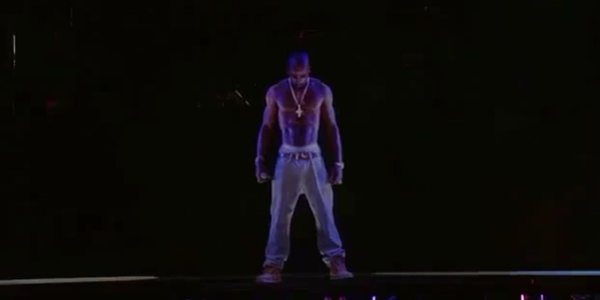Stepping into the expansive 33,000-square-foot warehouse of AV Concepts’ corporate office in Tempe, which houses floor-to-ceiling storage of projectors, screens and the bleeding edge systems in holographic illusions and audio/visual kits, is less intimidating than expected from a company that has found a way to resurrect the likeness of deceased celebrities and revolutionize the executive boardroom. It doesn’t, say, have the feel of a dust-free cryogenic chamber that requires a name badge to even peek inside one of the many boxes. In fact, it just looks like a regular warehouse. The closest thing is the much smaller workshop where every cable is checked and treated after a job.
“The world we live in is compressed,” says co-founder Fred Mandrick, who picks up what looks like an Ethernet cable to illustrate his point — 158 digital channels can run through this one eight-fiber cable, he says, adding that to achieve the same effect in the past involved multiple cables bundled together. Now, technology is lighter, sleeker. What used to take days or weeks to set up, he says, can be done in a day or a few hours. In fact, it only takes 60 seconds to deploy a stage on which AV Concepts resurrects deceased rappers at the Rock the Bells music festival.
AV Concepts, celebrating its 25th year in business, has been prepping for this technology for years, leaving behind analog technology in favor of digital and fiber optic investments.
“It’s about building systems and technology where it’s simplistic,” Mandrick says, adding many of the businesses AV Concepts works with need a company that is time-efficient.
Bringing holographic illusions to life involve specialized holographic foil, lighting effects and the company’s proprietary Liquid Scenicsm projection mapping media server. The server stacks uncompressed images and, using high brightness projectors, creates life-like performances. The company’s most recent recreations were for the Rock the Bells music festival for which it produced holograms of NWA’s Eazy-E and Wu-Tang Clan’s Ol’ Dirty Bastard.
“The virality of Tupac really helped us and drove a lot of people to us. A lot of people instantly said, “Look, that’s amazing. How do I do that? How do I get just a percentage of something like that?”
The concept is and isn’t the novelty of this kind of experience. In many ways, the hologram plays on a light trick practiced for centuries before AV Concepts was founded by Arizona natives Nick Smith and Fred Mandrick.
After 21 years of relative obscurity, four months of working on the Tupac project, a crashed server, blown up phones and every media outlet in the country looking for an explanation of what happened at Coachella, AV Concepts and hordes of marketing companies saw the potential of holographic images.
After Tupac’s posthumous holographic performance, he reentered the Billboard charts for the first time in more than a decade, selling 4,000 copies of his 1998 album, Greatest Hits. The song he performed, “Hail Mary,” was downloaded 13,000 times the week after his Coachella appearance.
“The key is that if you’re a major corporation or a major brand and you see these events all the sudden you see a sea of camera phones go up, from their point of view, it’s ‘Put my brand here,’” explains Anthony Stevens, vice president of business development for AV Concepts.
And that’s exactly what Nike, Inc. did.
The multinational sportswear conglomerate employed AV Concepts to create a 8-by-12-foot holographic illusion of its Jordan Super.Fly 2 shoe for the Jordan Brand’s latest shoe launch.
So how does a company that got its start running slide projectors at a John Deere event become the most sought-after company for its services?
“We started out as a very simple-minded company, based on how much money we had,” says Mandrick. “Our fundamental message was be the best we can be and make sure we have value beyond what they’re paying for.
With the exception of the company’s custom-made screens — the largest being 13-by-80 feet with a 10M pixel resolution — all of its equipment can be purchased “off the shelf.” It’s just a matter of modifying the gear and knowing how to use it.
The AV Concepts team has spent four years of trial and error perfecting its technology. And though most of its equipment is purchased off the shelf, it’s still nowhere near ready for everyday consumers. There are also little lessons along the way — Stevens recalls an instance when an observer saw a holographic projection on a building and called the fire department assuming the fire was real.
Outside of revolutionizing the board room, entertainment and marketing, AV Concepts is looking into educational expansion in the medical field.
“You’re not going to do this for your high school graduation,” Mandrick says, adding projectors are $50,000 a piece and that’s before factoring in the power bill and the fact that an average gig requires six to 10 projectors.
When it comes to finding a place, the company’s philosophy is simple, Mandrick says, “The tallest ceilings you can get.”




